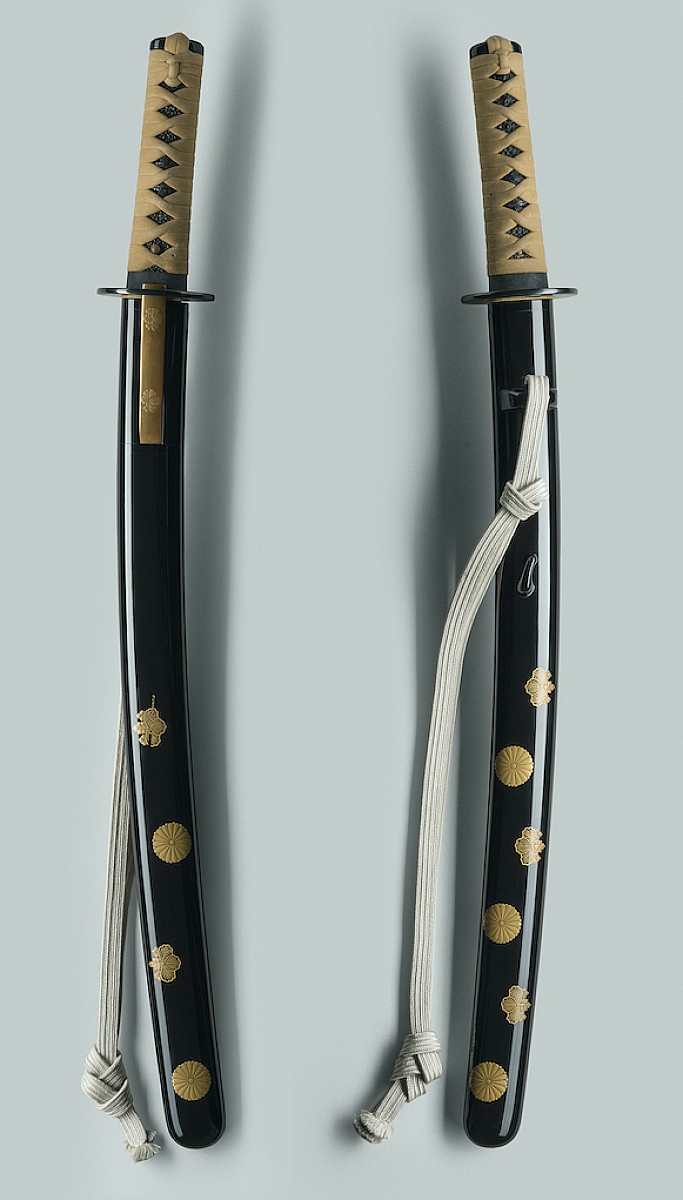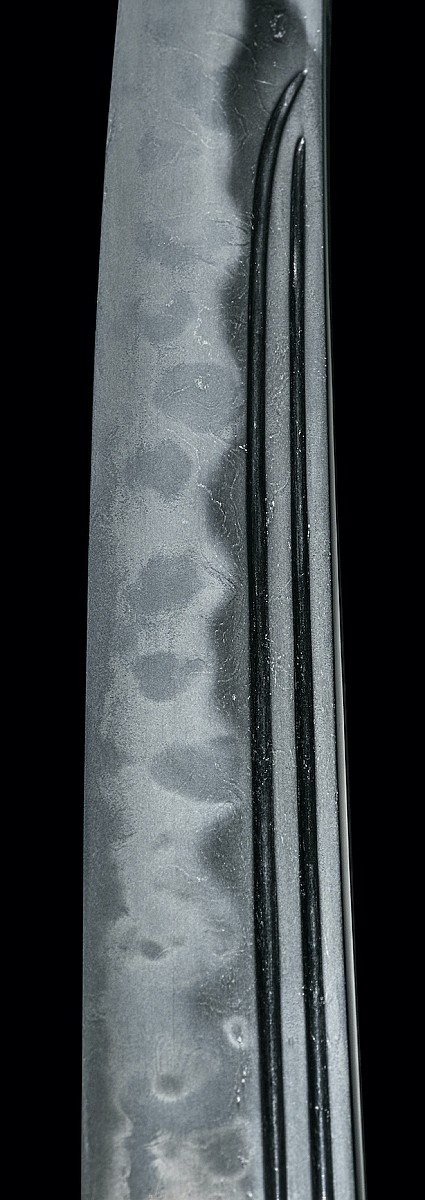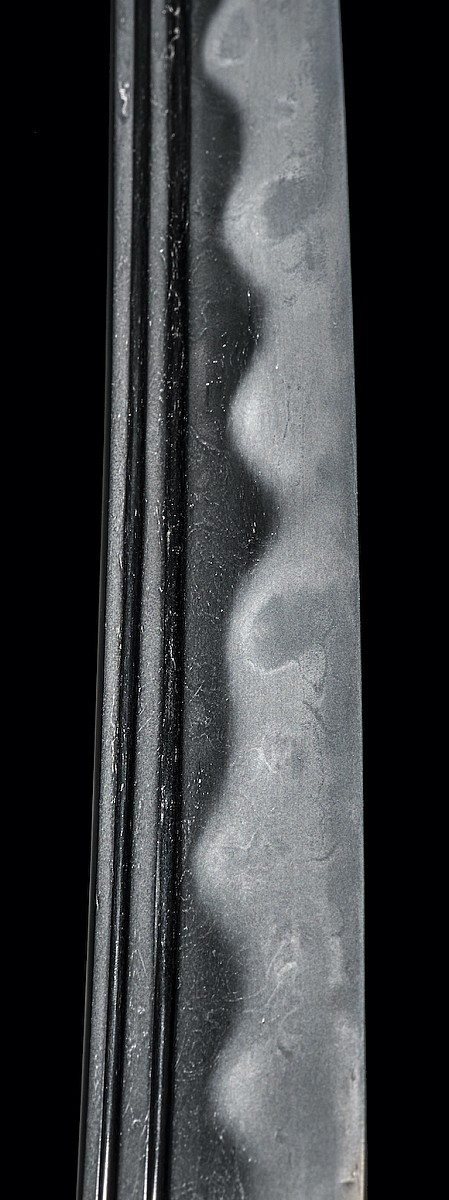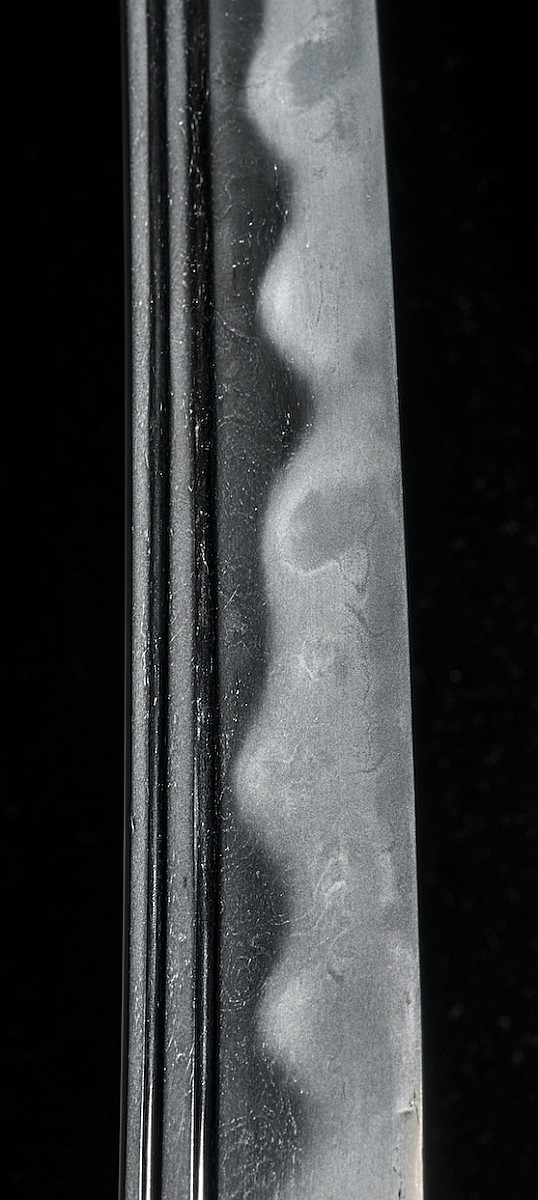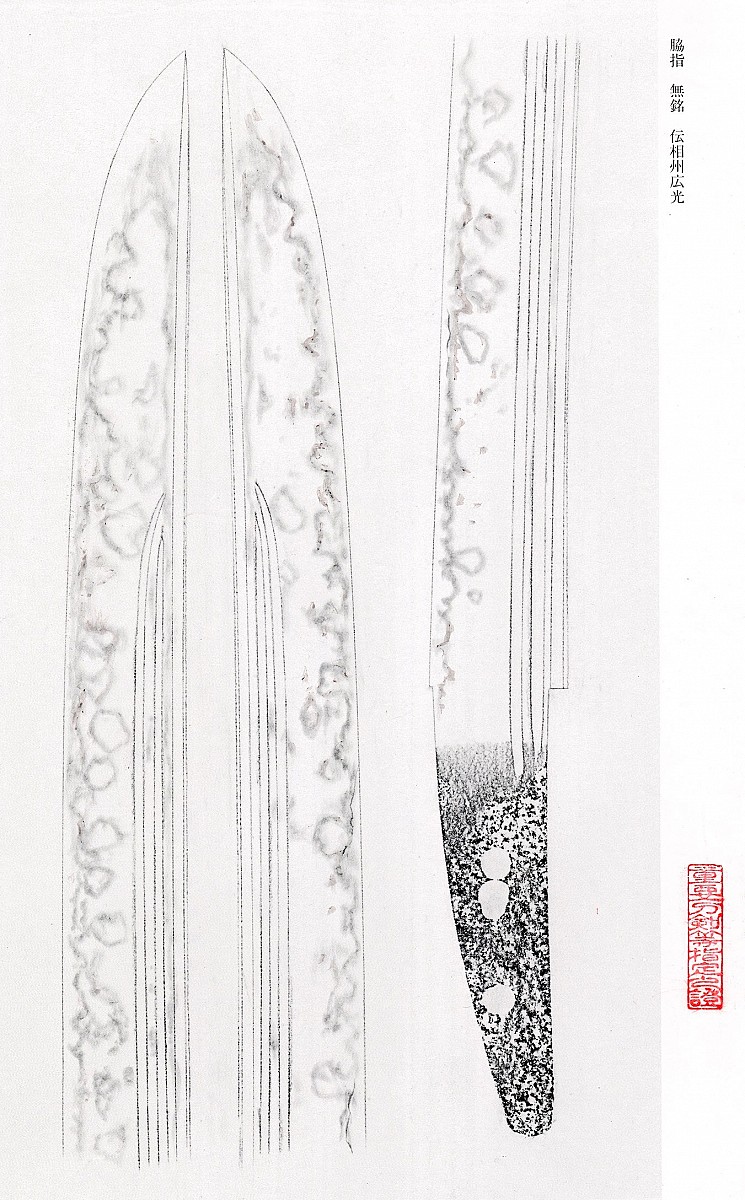Hiromitsu (廣光), 1st gen., Bunna (文和, 1352-1356), Sagami – „Sagami no Kuni-jū Hiromitsu“ (相模国住廣光), „Hiromitsu“ (廣光), „Sagami no Kuni-jūnin Hiromitsu“ (相模国住人廣光), first name „Kurōjirō“ (九郎二郎), according to transmission the son of Sōshū Sadamune (貞宗), but some see him as student or son of Masamune (正宗). Tokaido (東海道), saijō-saku.
Jūyō Tōken Den Hiromitsu Wakizashi: nagasa: 37.4 сm; sori: 0.5 сm; motohaba: 2.8 сm; nakago nagasa: 10.3 сm; nakago sori: 0.1 cm; unsigned, attributed to Hiromitsu with so-called Den prefix, shirasaya with sayagaki by Kunzan (Honma Junji, Tōkyō, November 1987). The sword is presented with an authentic koshirae made in the beginning of Shōwa era.
Designated as Jūyō Tōken at the 35th jūyō-shinsa held on the 14th of April 1989.
Publication: NBTHK Jūyō Tōken Nado Zufu, Volume 35.
This worthy work by Hiromitsu is distinguished by the fact that it is one of the longest short swords extant by this master (37.4 cm). It features a rich and bright hitatsura along the entire length of the blade and has good-quality forging, as noted by NBTHK. Although the sword was subjected to polishing many times during its almost 650 years of life, it has revealed no signs of faulty fusion, inclusions, or cavities on the blade.
A very interesting aspect is the not-shortened tang of the sword (ubu—of the initial shape), where signs of signatures are still visible (the signature was removed later). With slight magnification, we can see “Sagami (no) Kuni-jūnin . . . ”, which is a characteristic of Hiromitsu. After that, most likely, there was the name Sadamune. This is an example of a very typical situation, when fraudsters, forging a signature, changed it to the signature of a higher-ranking smith, thus increasing the status and value of the sword. In this case, their task was facilitated by the fact that Sadamune’s and Hiromitsu’s signatures had the same beginning, and Sadamune used hitatsura in his late works, though not as bright and rich. Later, to obtain a correct attribution corresponding to the master, the fake signature was removed, and the initially signed work became mu-mei.
Dr. Honma Junji (本間順治, 1904–1991) used the nickname Kunzan (薫山), which literally means “fragrant mountain.” In the late twentieth century, Dr. Honma Junji, the leading expert at the time on the Sagami School, performed a personal attribution of this sword directly to Hiromitsu and made the appropriate record on shirasaya. A sayagaki was made in November 1987, on the premises of Kugayama in Tōkyō. Dr. Honma dated this work back to the Eiwa era (永和, 1375–1379), which is a somewhat uncharacteristic period for Hiromitsu. In this case, the sword is one of the most recent known works of the master, according to Dr. Honma’s attribution. However, we note that the quality of this sword is very different from Hiromitsu’s best works (see the following ko-wakizashi by the master, as described below), and we can fully agree with the reservation “Den,” meaning “attributed to Hiromitsu.”
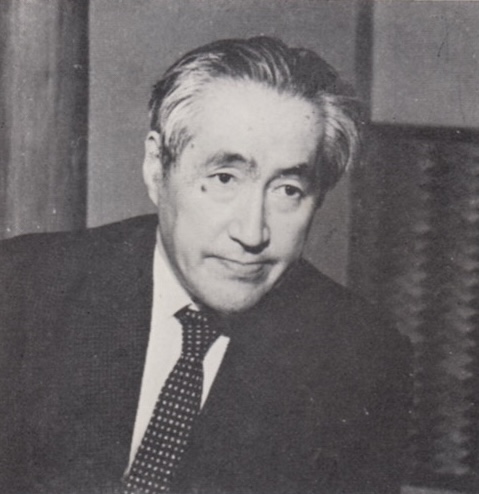
Dr. Honma Junji.
Sayagaki: 相州廣光。永和頃。刃長一尺二寸三分。昭和丁卯年霜月於久我山房。薫山誌。 ”Sōshū Hiromitsu. Around Eiwa (1375–1379). Nagasa 1 shaku, 2 sun, 3 bu. Written in a room in Kugayama (Tōkyō) on the 11th month of the year of the Hare of the Shōwa era (1987). Kunzan + Kaō.”
Koshirae: The sword is presented in a casing, and its black varnished sheath has a picture of two kirimon. The first one is the seal that was used in the Kamakura period by the members of the emperor’s family and later by Toyotomi Hideyoshi. The second one is the emperor’s seal. The tsuba is modest, as compared to the sheath. It has a Hozon certificate and has been appraised by NBTHK as a Kenjō (献上) work.
(excerpt from Chapter 7, pp. 162-205, of the Japanese Swords: Sōshū-den Masterpieces )
Original content Copyright © 2019 Dmitry Pechalov


